On rare occasions, you may find that the Drive letter is missing from File Explorer following the installation of an Update. If you have experienced this issue on your Windows 11/10 PC, here’s a way to get past the problem.
A drive letter represents a single alphabetic character (typically through A-Z) that can be assigned to the following-
- Physical disk partition
- Floppy disk drive
- Removable device/ CD-ROM/ mapping network drive in the computer.
Drive letter missing in Windows 11/10
Generally, drive letter C: is assigned to the first disk partition where the running Windows is installed. So, if this fixed drive letter is missing from either Windows File Explorer or Disk Management, it can cause inconveniences or even makes the partition inaccessible. If C or D Drive letter is missing, then to fix this issue, you can:
- Manually Show Missing Drive Letters
- Ensure your drive has a drive letter assigned in Disk Management
- Assign the letter via a Registry tweak
- Update Disk Drives Driver
- Run Hardware Troubleshooter.
The above steps can help you to get the missing drive letter back.
C or D drive is not visible in File Explorer
1] Manually Show Missing Drive Letters
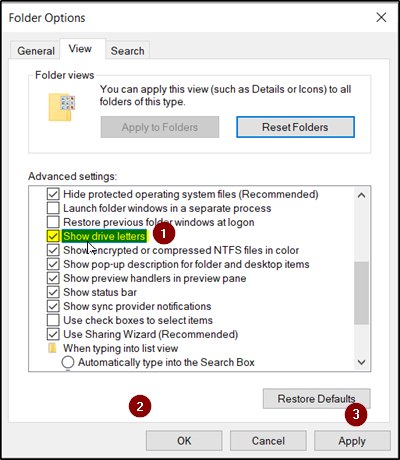
From the Start search, open Folder Options and click the ‘View’ tab.
Scroll down the list of options until the ‘Show drive letters’ option is seen. Simply check the box marked against this option.
Click ‘Apply’, then ‘OK’.
Now, go back to the ‘This PC’ window. Your drive letters should be visible.
2] Ensure drive has a drive letter assigned in Disk Management
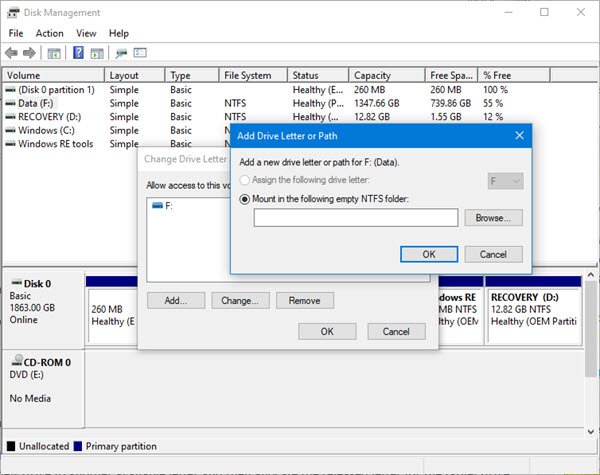
In Disk Management, every drive is assigned a drive letter, but if it is missing, In Windows Disk Management, you can get it back.
There’s a function ‘Change Drive Letter and Paths’ that appears when you right-click menu of a partition (Volume). It helps you to-
- Add the drive letter
- Change the drive letter
- Remove the drive letter
If the last option, i.e., ‘Remove’ is selected and applied, the letter of the target drive will be removed and disappear in Disk Management. This can be one of the reasons for missing a drive letter.
So, to reverse this change, choose ‘Add’ to assign a letter to the selected drive. It is essential to assign the drive with the original letter – because, if not, then the programs relying on the original letter might not work as desired. If the original letter is taken by a new drive, change the letter of the new drive to another available letter and then allocate the released letter for the target drive.
3] Assign the letter via a Registry tweak
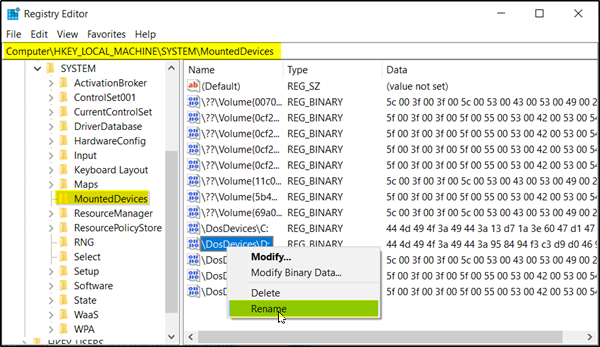
Launch Registry Editor and navigate to-
HKEY_LOCAL_MACHINE\SYSTEM\MountedDevices
See if a device is shown as being mounted at the specific drive letter.
Next, right-click the drive letter that you want and choose “Rename” from the right-click menu to change the letter to any other unused letter.
Read: How to change Drive letter in Windows 11/10.
4] Update Disk Drives Driver
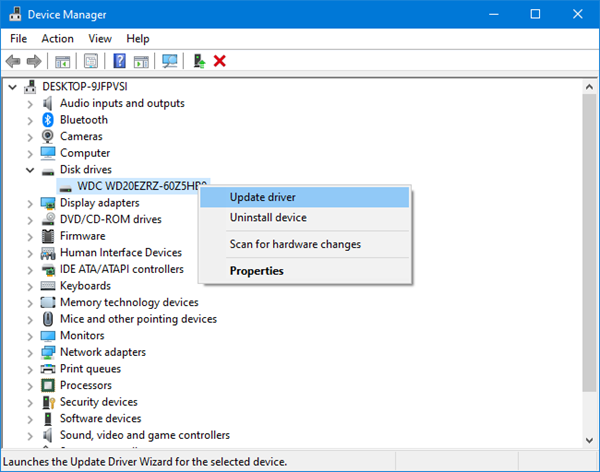
From the WinX Menu, open Device Manager, expand Disk drives, right-click on your Hard Disk and select Update, to update the device driver.
5] Run Hardware Troubleshooter
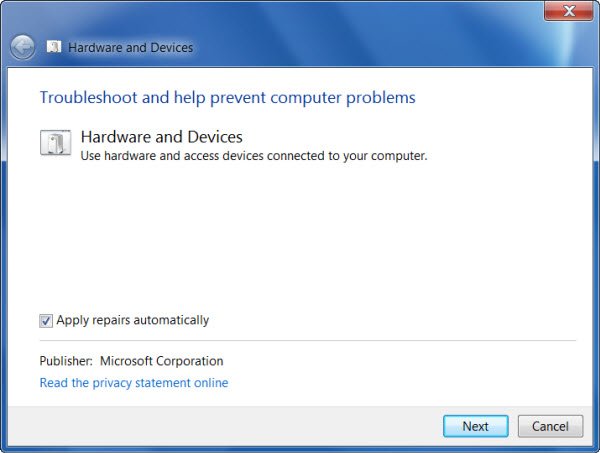
Run the Hardware Troubleshooter from the Troubleshooters Page and see if it helps.
I hope something helped!
Why is my local drive not showing up in File Explorer?
Your local drive may not show up in File Explorer due to outdated drivers, or a faulty drive. First, check the physical connections. If that doesn’t work, try updating or reinstalling the drive’s drivers to resolve the issue. To make the drive visible, open Disk Management by pressing Win+X and selecting it. Locate the drive, right-click, and choose “Change Drive Letter and Paths.” Click “Add” and select a letter. Save the changes.
What do I do if my C drive is missing?
If your C drive is missing, try updating the disk driver. An outdated driver can cause the drive to disappear. Go to Device Manager on Windows, find and update the disk driver, and check if the drive reappears in File Explorer after updating.
Leave a Reply